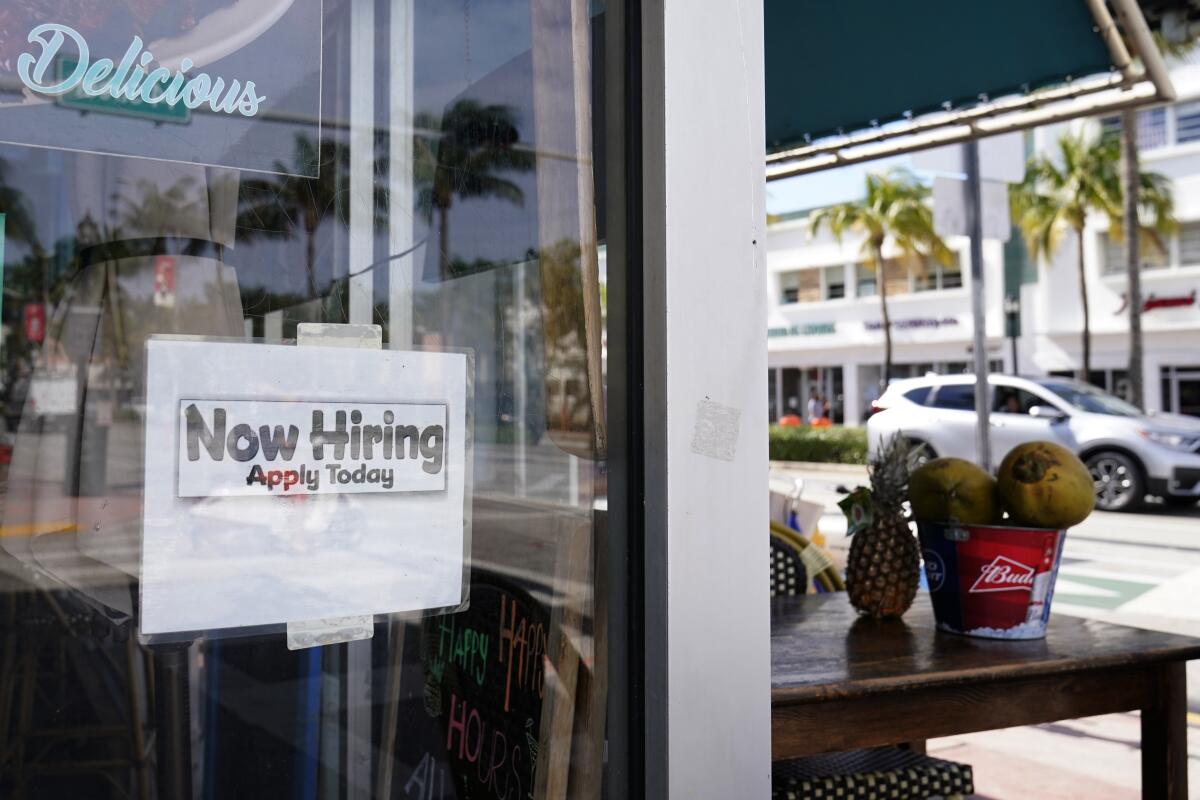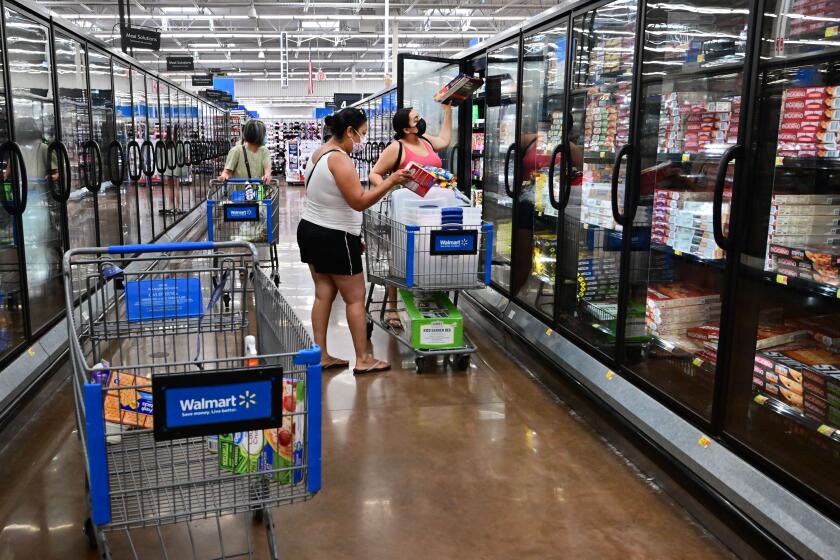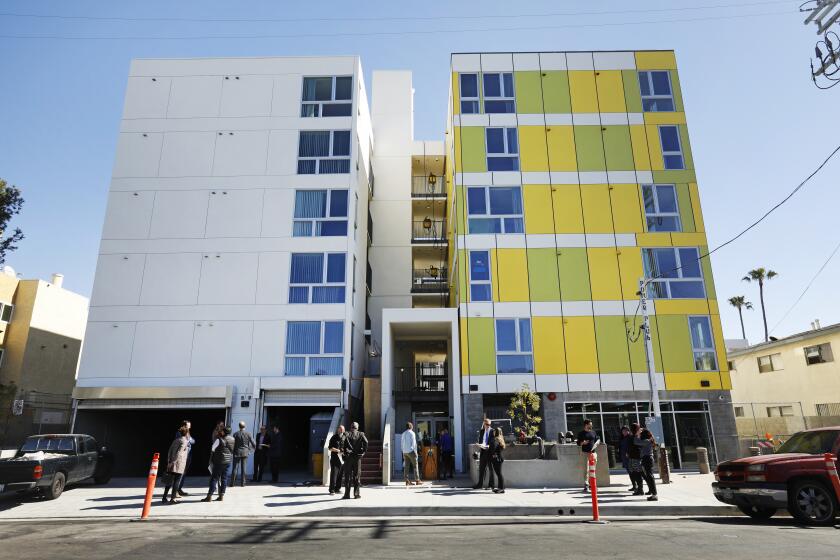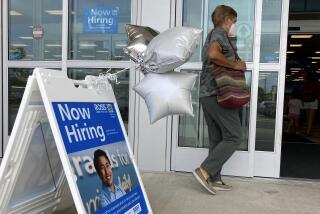Why is it so hard to say if this is a recession?

- Share via
Economists were on high alert Thursday morning awaiting data from the U.S. Commerce Department that might shed light on whether the country is in a recession — a question with vast implications for consumers, employers and electoral politics.
The data showed gross domestic product declining at an annualized rate of 0.9% in the second quarter, after a 1.6% contraction in the first quarter. Back-to-back quarters of negative growth is one commonly used benchmark of recession.
That settles that, right?
Not quite.
Weighing against the evidence of slowdowns in consumer spending and business investment are other data including, crucially, robust job growth. To call it a recession without factoring these in — and without waiting to see how those GDP figures end up getting revised — would be premature, economists say, especially in an economy as topsy-turvy as the current one.
In other words, there’s more than one way to define a recession, and even economies judged to meet the criteria at a given moment might later be cleared of the label.
Still confused? Keep reading.
Who decides if it’s a recession?
Officially, it is the National Bureau of Economic Research’s Business Cycle Dating Committee that declares a recession. In its books, recession is “a significant decline in economic activity that is spread across the economy and that lasts more than a few months.”
Yet the last recession declared by the NBER — for the period from March to April 2020, when the country was hit by the first wave of the COVID-19 pandemic — met only the first half of that definition. It was the shortest recession in U.S. history. Historically, recessions have lasted for 17 months on average.
The U.S. economy shrank from April through June for a second straight quarter, contracting at a 0.9% annual pace and raising fears of a recession.
The NBER’s Business Cycle Dating Committee takes a cautious approach to its job. It has typically taken the committee four to 21 months to declare recession. It didn’t declare the recession that began in April 2001 until July 2003.
Why aren’t two negative quarters of GDP enough to call it a recession?
Because if it’s truly a recession, all the indicators should be moving in the same direction. Right now, it’s only GDP, said Eric Swanson, professor of economics at UC Irvine. Consumer spending is still going up, albeit moderately, and industrial production is also showing slow growth. Significantly, job growth is still robust.
“In a recession, more people would be losing jobs. But if you look at the unemployment rate, it is very low,” Swanson said. “The GDP is a volatile measure, and one has to look at some alternative indicators as well.”
The economy added a healthy 372,000 nonfarm jobs in June, surpassing expectations. The unemployment rate stood at 3.6% in June, the same level as in the previous three months and the lowest since February 2020.
How can the economy be shrinking but not in a recession?
It’s a matter of degree and, to some extent, of judgment.
In declaring the previous recession of 2020, the NBER committee said that “in deciding whether to identify a recession, the committee weighs the depth of the contraction, its duration and whether economic activity declined broadly across the economy.” Each of these conditions must be individually met.
Notably missing from the committee’s list of factors is two consecutive quarters of negative GDP. In fact, in 2001, the recession did not include back-to-back down quarters.
The Federal Reserve may have accelerated its attack on inflation by hiking interest rates. But that’s also driving up rents by deterring would-be buyers.
The NBER committee has even said that real GDP — adjusted for inflation — could decline by relatively small amounts in two consecutive quarters without signaling a stalled economy.
Why are economists so cautious about using the R-word if they’re just crunching data?
Because the data can change after the fact. The Commerce Department’s Bureau of Economic Analysis estimates the value of goods and services produced in the economy through an initial set of data that it gathers. Over time, when it collects more data and gets a full picture, it revises the GDP figures.
Jason Furman, a Harvard University professor and former chair of the White House Council of Economic Advisors, said that there is more than a 50% chance that the first two quarters’ GDP numbers will turn out to be positive when all the data are in.
He points to another yardstick for the economy: income, which is reflected in the measure known as gross domestic income (GDI). The NBER committee heavily relies on GDI as well.
The GDI typically adds up equal to the GDP. But, in the January-through-March quarter, GDI rose 1.8% while GDP fell by 1.6%, a sharp divergence. The GDI for the second quarter will be released next month, giving a better view of how income levels have fared during this period.
But even if it’s not the singular measure that determines the health of the economy, GDP does say something important about it — and what Thursday’s figures have to say isn’t great.
“This is not a good GDP report,” Furman said. “The risk that the United States is entering a recession has definitely gone up.”
More to Read
Inside the business of entertainment
The Wide Shot brings you news, analysis and insights on everything from streaming wars to production — and what it all means for the future.
You may occasionally receive promotional content from the Los Angeles Times.













